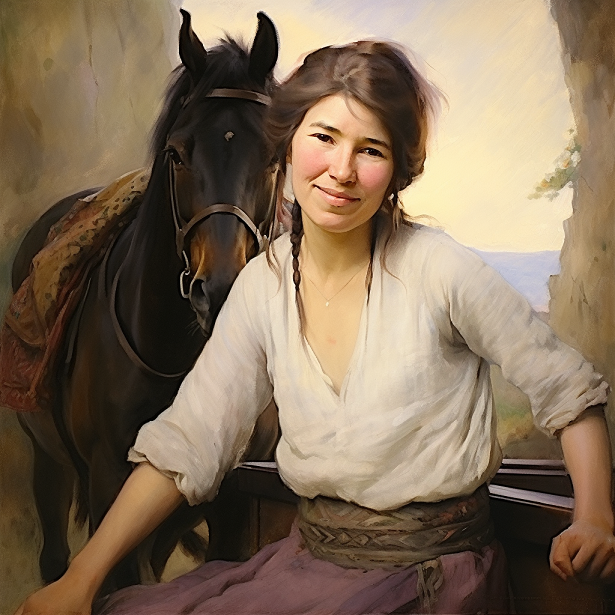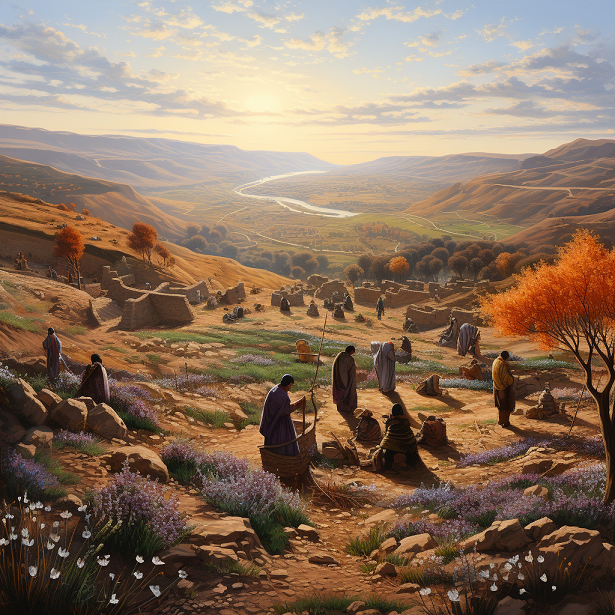Freya Stark, an indomitable English explorer and author, journeyed through the Middle East with a spirit that defied the constraints of her era. Born in 1893 and living through a century marked by rapid change and conflict, Stark’s writings brought to life the remote landscapes and cultures of Iran in her book “Valley of the Assassins.” Here we delve into her riveting exploration of ancient graves and her astute cultural observations during her travels in Iran.
Stark’s narratives are not merely travelogues; they are bridges connecting the past to the present, revealing the deep-seated traditions and evolving dynamics of the Iranian plateau. Her observations are punctuated with vivid descriptions, poignant reflections, and a relentless curiosity, all of which paint a comprehensive picture of the land and its people. As we traverse through Stark’s journey, we encounter not only the physical terrain of Iran but also the rich tapestry of its history and the resilience of its people, all through the eyes of a remarkable woman whose legacy transcends the pages of her books.
Stark’s Journey into the Heart of Iran
Freya Stark’s journey into Luristan province of Iran was not merely a geographical venture but a plunge into the historical and cultural depths of the ancient land. Her travels took her through rugged landscapes, from the perilous Asadabad Pass to the enigmatic ruins and bustling societies of cities like Alishtar. These places, steeped in history and legend, provided the backdrop for her adventurous spirit and unquenchable curiosity.
Stark’s journey was fraught with the challenges typical of early 20th-century travel in remote areas. She navigated through physical hardships, such as harsh terrains and the daunting task of communicating and integrating into a society vastly different from her own. Yet, her writings reflect a relentless determination and an admirable bravery in the face of these obstacles. She did not merely pass through these landscapes; she immersed herself in them, seeking to understand the pulse of the land and its people.
One of the most compelling aspects of Stark’s journey was her interaction with the local people. Her accounts are filled with detailed observations of daily life, from the bazaars teeming with activity to the quiet, introspective moments shared with individuals who had lived their entire lives within these ancient walls. These interactions were not without their difficulties, as Stark navigated cultural and linguistic barriers, yet they are recounted with respect and a keen sense of shared humanity.
The Bronze Age Graves of Dilfan Iran
In “Valley of the Assassins,” Freya Stark’s exploration of ancient graves in Dilfan becomes a focal point of her journey, illuminating the deep historical currents that run through Iran. Her vivid descriptions bring to life the eerie beauty and solemnity of these resting places, providing insights into the beliefs, rituals, and artistry of ancient civilizations.
In the valley of Dilfan, ‘Abdul Khan emerges as a pivotal figure in Freya Stark’s journey, a tribal leader whose authority and knowledge of the land prove invaluable. As a custodian of local history and customs, ‘Abdul Khan possesses an intimate understanding of the ancient graves scattered throughout the region. His position commands respect and facilitates the access Stark needs to delve into the mysteries of the past. Stark’s encounter with him is marked by a blend of negotiation and mutual respect, leading to his agreement to mobilise his tribe in search of the graves. With a combination of diplomatic skill and genuine curiosity, Stark earns ‘Abdul Khan’s assistance, setting the stage for a collaborative exploration of Dilfan’s storied landscape.
He himself had never done so illegal a thing as to open a grave, said ‘Abdul Khan, picking at his opium pipe with a bronze bodkin two or three thousand years old, and looking at me with the calm innocence of a Persian telling lies. ‘But as it is the wish of my friend, the Sardari Naib, that you should see one, I will set my tribe to hunt for you, and if God wills we may find something to-day or to-morrow.
Freya Stark: Valley Of The Assassins
Stark’s encounters with the graves are not merely cursory observations; they are detailed examinations of the remnants of life long past. She describes the earliest graves lined with flints and rough earthenware, symbolising the rudimentary beginnings of burial practices. As she moves through different sites, Stark notes the transition to graves containing both flint and bronze, indicating a society in the midst of technological and cultural shifts.
The earliest graves with flints and rough earthenware alone were buried with the skeleton crouching in its narrow bed lined with stones: later come graves with flint and bronze together; and round graves where the dead were seated, surrounded with potteries and bronzes.
Freya Stark: Valley Of The Assassins
The graves themselves vary in shape and size, from round graves to the mysterious Lihaqs, suggesting a diversity in burial customs and social stratifications. Stark’s narrative is punctuated with her interactions with the locals, who sometimes assist in her explorations. Their reactions range from helpful to hesitant, reflecting varying attitudes towards the excavation of these sacred spaces.
Stark’s archaeological interest is not just in the physical remnants but in piecing together the stories they tell of the people who once inhabited these lands. Each artefact, from pottery shards to skeletal remains, provides a clue to understanding the complex tapestry of Iran’s history. Her descriptions are not just factual recountings; they are imbued with a sense of wonder and respect for the ancient lives that these graves once encompassed.
Cultural Observations and Interactions
Freya Stark’s journey through Iran was as much an exploration of its living culture as it was of its ancient past. Her acute observations provide a vivid portrait of the people she encounters, capturing the essence of their daily lives, beliefs, and customs. Stark’s narrative is a rich tapestry of the cultural landscape of Iran, reflecting her deep respect and genuine curiosity for the traditions and lifestyles she encountered.
Her writings delve into the nomadic lifestyles of the Lur people, offering an intimate glimpse into their world. Stark describes the nomadic tents, the intricate patterns of their clothing, and the rhythms of their daily activities. She paints a picture of their communal meals, their methods of animal herding, and the simple yet profound rituals that govern their lives. These descriptions are not just mere observations; they are a testament to the enduring spirit of the nomadic tribes, whose lives are intricately woven with the land they inhabit.
Stark’s cultural exploration also extends to the social structures and hospitality she encounters. She notes the warm and generous spirit of the people, who, despite their own hardships, offer her food, shelter, and companionship. Her interactions reveal the complex codes of honor and respect that underpin these societies, reflecting a deep-seated sense of community and belonging.
Yet, Stark’s journey is not without its challenges. As a foreign woman travelling alone, she navigates the cultural and gender norms with a blend of respect and assertiveness. Her experiences reflect the broader societal attitudes of the time, highlighting both the restrictions and the opportunities that her unique position affords her. Stark’s narrative is a nuanced reflection on the intersection of culture, gender, and identity, offering insights into the complexities of cross-cultural exchange.
Throughout her travels, Stark’s role oscillates between that of an observer and a participant, allowing her to capture a multifaceted view of Iranian culture. Her writings are a window into the lives of the people she meets, showcasing their joys, struggles, and the rich cultural heritage that defines them. Through her eyes, we see the beauty of cultural diversity and the universal human experiences that connect us all.
Stark’s Reflections on the Ancient and Modern Worlds
In “Valley of the Assassins,” Freya Stark offers profound reflections on the juxtaposition between the ancient world she uncovers and the modern realities she navigates. Her journey through Iran is not only a physical traverse but also a temporal voyage, connecting the dots between the past and her present. Stark’s narrative is imbued with a deep sense of historical consciousness, acknowledging the intricate layers of history and culture that define the Iranian landscape.
As she delves into the ancient graves, Stark becomes acutely aware of the continuity and change that characterise human civilisation. She reflects on the enduring aspects of culture and tradition, noting how certain practices, beliefs, and artistic expressions have persisted through millennia. Yet, she is equally cognisant of the transformative forces of time, witnessing first-hand the impact of modernity on traditional ways of life. Her observations are a testament to the dynamic nature of culture, constantly evolving yet rooted in a rich historical past.
Stark’s reflections often highlight the tension between preserving the past and embracing the future. She discusses the challenges of archaeological preservation in the face of modern development, expressing concern for the sites that are at risk of being forgotten or destroyed. Yet, she also recognises the inevitability of change and the need for societies to adapt and evolve. Her writings capture the delicate balance between honouring history and moving forward, albeit sometimes at the expense of local traditions and norms, a theme that resonates throughout her journey.
We were not liked, for wherever we went this matter of clothes was looked into, and someone would snatch the caps off the people’s heads in honour of the new regulations: when we halted, a policeman sat in a tent close by and had in one Lur after another to cut off his hair. The poor people came back to our circle round the fire with sheepish looks, complaining of the cold on their ears and saying: ‘Wallah, this is civilization’ — while the Sardari Naib, sitting cross-legged with his curved sword in his hands, would talk to the headman in the politest way, beginning: ‘In the service of your Exaltedness let me explain, oh my soul,’ and going on to specify how the Shah, like God on this earth, can order people to go about even naked, and there is nothing for it but to obey.
Freya Stark: Valley Of The Assassins
Moreover, Stark’s journey through Iran serves as a mirror, reflecting the broader human experience of grappling with identity and legacy in the face of relentless change. She contemplates the role of individuals and societies in shaping history, pondering the marks we leave behind and the stories that will be told about us. Through her reflective journey, Stark invites readers to consider their own place in the continuum of history and the responsibility we all share in preserving our collective heritage.

In concluding this exploration of Freya Stark’s “Valley of the Assassins,” it becomes evident that her journey through Iran is a multifaceted tapestry of history, culture, and personal adventure. Through her vivid narratives, Stark brings to life the ancient graves, the undulating landscapes, and the diverse tapestry of people that define Iran. Her keen observations and reflective insights provide a rich, intimate portrayal of a land that is as complex as it is enchanting.
The exploration of ancient graves illuminated not only the burial customs and artefacts of past civilizations but also reflected the broader themes of life, death, and legacy. Stark’s detailed descriptions and thoughtful reflections on these sites offer a poignant reminder of the transient nature of existence and the enduring quest to understand our past. Her journey is a testament to the importance of preserving and studying historical sites, not merely as academic exercises but as vital links to our collective human story.

